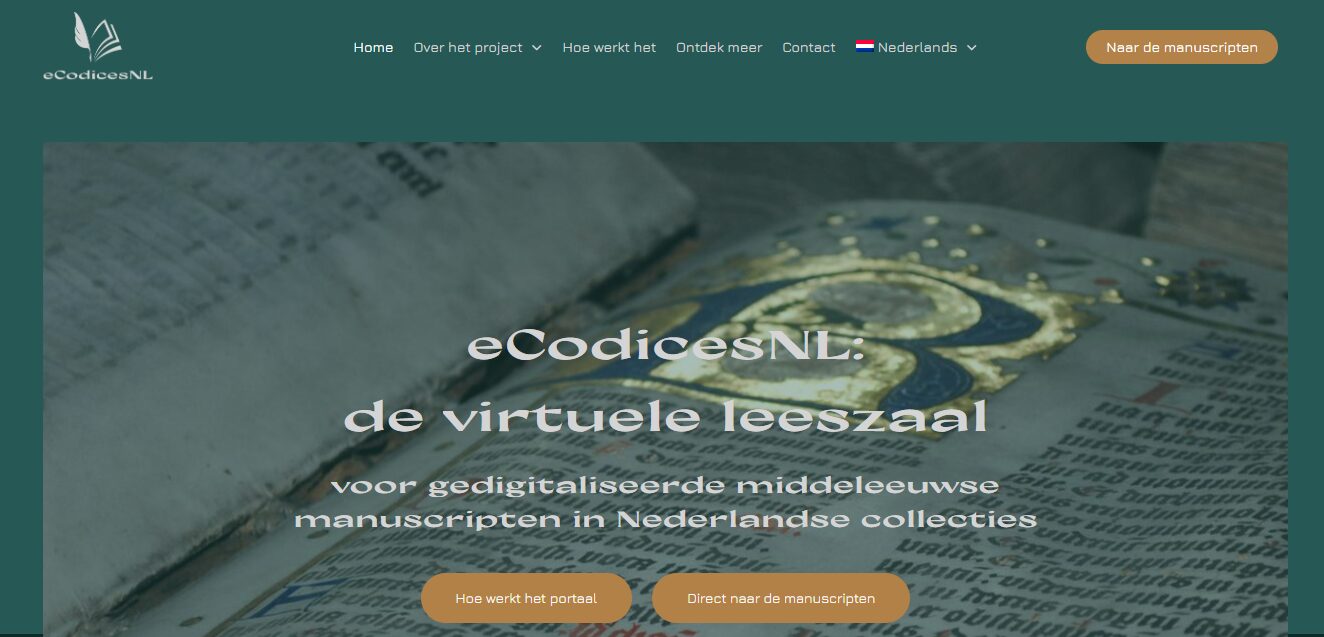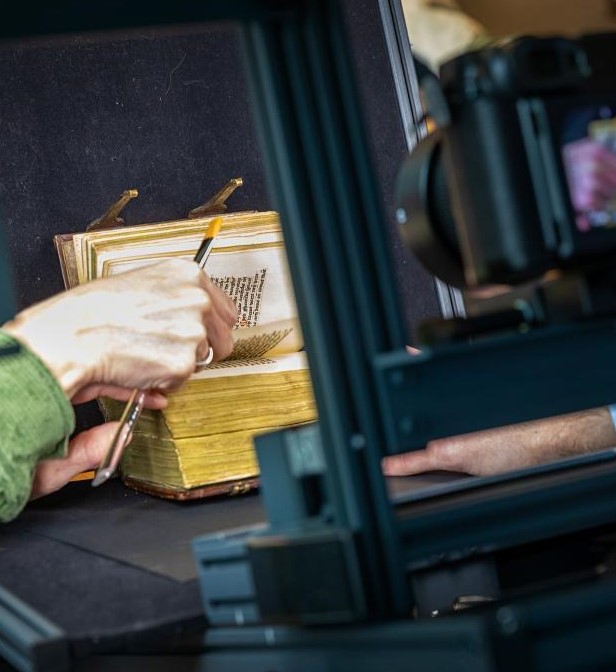eCodicesNL
| Duration: | Phase 1: September 2020 - Juni 2023 / Phase 2: Juni 2023-? |
| Subsidy provider: | Fund KNAW Institutes |
| Subsidy size: | 247,000 euro |
| Remarkable: | The Netherlands has more than 90 public institutions where medieval manuscripts are kept. This project produced a blueprint for a national manuscript portal for the aggregated collections: eCodicesNL. |
| Valorisation: | The prototype of eCodicesNL, a virtual reading room displaying 180 medieval manuscripts from three public collections, brings together digital images, metadata and a search interface. Visitors to the virtual reading room can search and browse the manuscripts, using different facets of their metadata, and view them in detail. |
eCodicesNL is a national digital library for medieval manuscripts in Dutch cultural heritage institutions. The aim of the project is to provide access to a complete set of digital images and proper descriptions, through an accessible user-friendly search interface.
Prototype
In 2020, the project team, consisting of Mariken Teeuwen, Irene van Renswoude, Renée Schilling (coordinator), Sebastiaan van Daalen and Rob Zeeman (software engineers from team DI), received a grant from the Fund KNAW Institutes to build a prototype for a virtual library for medieval manuscripts in Dutch collections. The Virtual Reading Room was launched in 2023: eCodicesNL. The prototype rested on a collaboration with three institutions: the Athenaeum Library in Deventer, Museum House of the Book in The Hague, and the literary and historical center Tresoar in Leeuwarden.
Among the manuscripts now on display in the virtual library are rare works by ancient poets, illuminated books of hours, and legal texts in Old Frisian, as well as thumbed-down manuscripts with practical instructions for a surgeon, or recipes for hair loss. It is a unique and diverse selection, important for the understanding of Dutch and European history, identity, religion, history of knowledge and science.

Opening page of the website eCodicesNL
High-quality digital photos
To build the portal, work has been done on two fundamental components: high-quality digital photographs of the complete manuscripts, and a digital infrastructure. For the first component, a team of at least two staff members (a photographer and a handwriting assistant) visited cultural institutions and photographed complete manuscripts using the Traveller’s Conservation Copy Stand and a high-quality camera. A short film of this process can be seen at https://ecodices.nl/collectie/digitising-manuscripts/. In this way, the manuscripts could remain on location and did not need to be transported to an image studio.

Photographing in the Special Collections of Radboud University with the Traveller’s Conservation Copy Stand. Photo: Radboud Universiteit/Dick van Aalst
Digital infrastructure
A major challenge for the project team lay in creating a digital infrastructure for sustainable and interoperable storage of the digital reproductions of the manuscripts and their metadata. The existing dataset Medieval Manuscripts in Dutch Collections (MMDC) was liberated from its closed and outdated environment and converted into a sustainable XML format, in accordance with an internationally adopted TEI-XML template for manuscript descriptions. In addition, IIIF(International Image Interoperability Framework) was chosen. We strived for a balance between detailed and professional information and an accessibility that is more geared towards a broad audience. The result is an accessible search interface that makes the metadata of the digitized manuscripts of the collections searchable.
Future plans
In 2023, the eCodicesNL team partnered with the KB. The KB/Metamorfoze continues the digitization of medieval manuscripts, led by Renée Schilling. At Huygens Institute, Irene van Renswoude and Mariken Teeuwen remain committed to further expanding the portal in various ways: more collections, more items, more metadata, the integration of Linked Open Data, improved functionality of the search interface. We are doing this by seeking grant opportunities and entering into collaborations with new partners. This will bring us closer to our ambition to make all medieval manuscript collections in the Netherlands accessible, both to researchers and to the general public.

